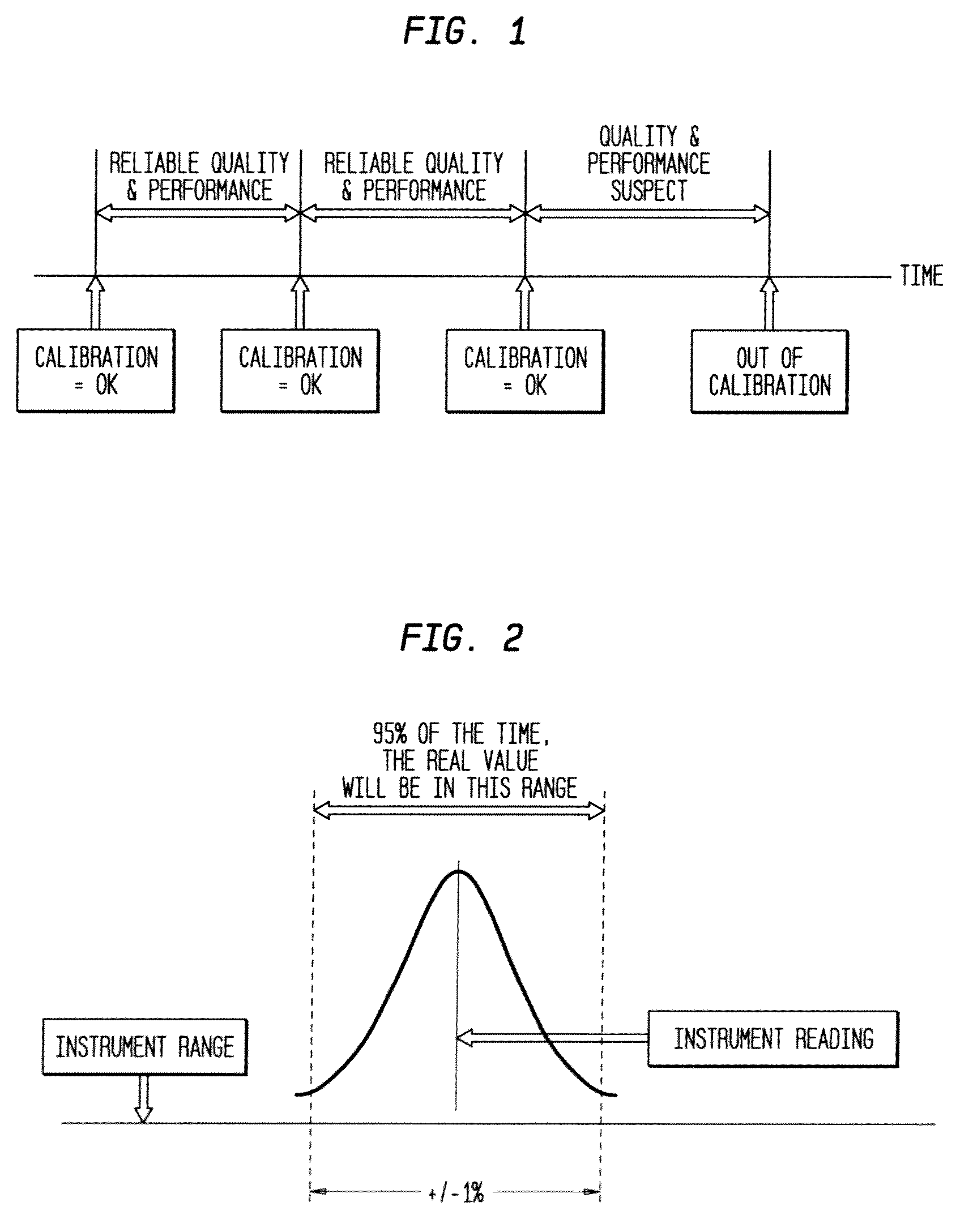Use of statistics to determine calibration of instruments
a technology of statistics and instruments, applied in the field of statistics and instrument calibration, can solve the problems of high cost of compliance with only a minimum roi for improving productivity or product quality
- Summary
- Abstract
- Description
- Claims
- Application Information
AI Technical Summary
Problems solved by technology
Method used
Image
Examples
second embodiment
[0158]FIG. 15, illustrates the invention which is a remote system for determination of re-calibration of instruments. Shown in FIG. 15, is a schematic diagram of a system which may be used to remotely monitor the performance of remote sensing instruments in accordance with the statistical analysis used to determine whether there is a need for calibration. A remote computer or workstation 14, having a processor and related memory are used to run monitoring and statistical analysis of data received from remote sensing instruments. In the system shown in FIG. 15, statistical monitoring and analysis 12, is run on computer 14, having a communication interface to access the Internet 16, and to communicate with at least one first remote sensor or instrument 18, and at least one second remote sensor or instrument 19. In the present embodiment and as an example only, it is contemplated that the sensing instruments are, for example, acoustic flowmeters 18, 19, used to determine the flow veloc...
third embodiment
[0161]FIG. 16, illustrates the invention which shows the use of multiple statistical tests to determine need for calibration. Shown in FIG. 16, is a schematic diagram of a system which may be used to remotely monitor the performance of remote sensing instruments in accordance with the statistical analysis used to determine whether there is a need for calibration. A computer or workstation 14, having a processor and related memory are used to run monitoring and statistical analysis of data received from sensing instruments.
[0162]In the system shown in FIG. 16, statistical monitoring and analysis software 12, is ran on computer 14, having a communication interface to communicate with the sensors or sensing instruments 18, 19. In this third present embodiment and as an example only, it is contemplated that the sensing instruments 18, 19, are acoustic flowmeters 18, 19, used to determine the flow velocity of a fluid in pipe 20. The acoustic instruments 18, 19, are a different specifies ...
PUM
 Login to View More
Login to View More Abstract
Description
Claims
Application Information
 Login to View More
Login to View More - R&D
- Intellectual Property
- Life Sciences
- Materials
- Tech Scout
- Unparalleled Data Quality
- Higher Quality Content
- 60% Fewer Hallucinations
Browse by: Latest US Patents, China's latest patents, Technical Efficacy Thesaurus, Application Domain, Technology Topic, Popular Technical Reports.
© 2025 PatSnap. All rights reserved.Legal|Privacy policy|Modern Slavery Act Transparency Statement|Sitemap|About US| Contact US: help@patsnap.com



